By Melody Horrill and Catherine Norwood
As the true value of estuaries and coastal wetlands is realised, Australia’s fishing sectors are in a prime position to benefit from the burgeoning blue carbon economy
European settlers once considered mangrove forests and salt marshes nothing more than pungent repositories for diseases such as malaria. But as nature-based carbon sequestration is recognised as a way to offset greenhouse gas emissions generated by human activities, new mechanisms have calculated the potential of these ecosystems as carbon sinks. And the news is good, according to Peter Macreadie, director of Deakin University’s Blue Carbon Lab.
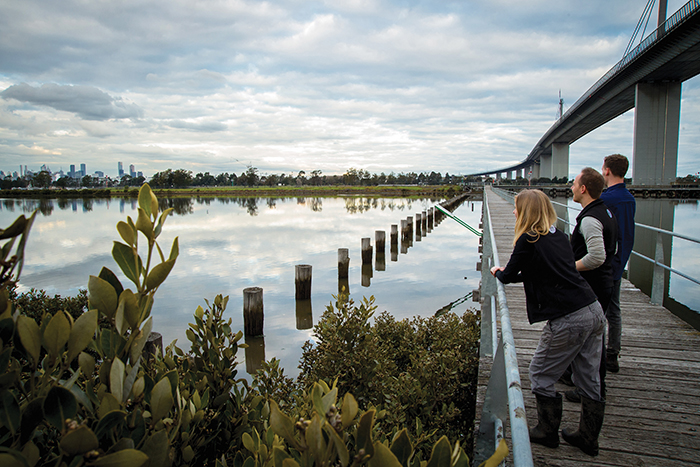
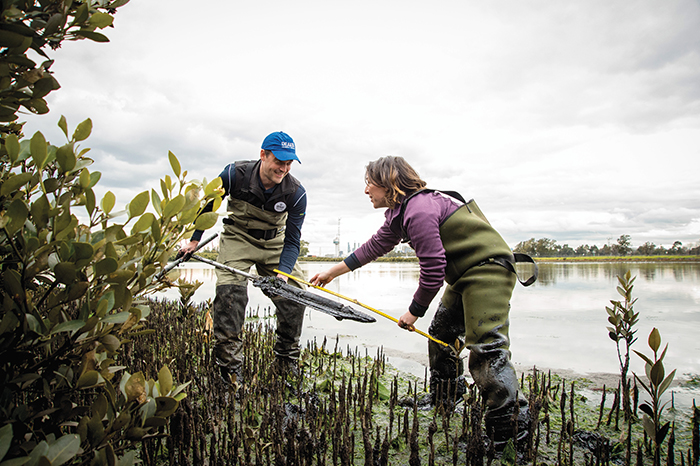
What is blue carbon?
Blue carbon is a name used for carbon sequestered by marine vegetation. Mangroves, saltmarshes, macroalgae (such as kelps) and seagrasses are highly efficient at capturing carbon in the atmosphere and converting it, via photosynthesis, into organic matter, which is then stored in sediment. These ecosystems also trap and store carbon from land run-off and from the tides. In this sense, they act as a carbon sink for particulate carbon that they did not produce. They provide long-term carbon sinks, sequestering carbon over thousands of years, and they sequester carbon in the ground at rates 10 times faster than most of their green carbon counterparts, such as trees.
The fishing and aquaculture sectors will be in the box seat as beneficiaries of blue carbon. Opportunities to earn carbon credits will drive investment in marine habitat protection and restoration, which will improve fisheries ecosystems and increase their productivity. For those in fishing and aquaculture sectors wanting to offset carbon emissions from their own activities, it will offer a way to invest that also improves the foundations of their own businesses.
Agreed accounting
Although there’s increasing enthusiasm for blue carbon, historically, Australia has been unable to trade homegrown blue carbon offsets on the carbon market.
However, that has started to change. Following consultation with technical experts, scientists and the broader public, the Australian Government announced in early 2022 that it has established an agreed blue carbon accounting method under the Emissions Reduction Fund. This will allow Australian blue carbon credits to be awarded for the first time.
In conjunction with this decision, the Australian Government has called for four demonstration trial projects to be funded through its Blue Carbon Ecosystem Restoration Grants. These grants are a core component of the broader Blue Carbon Conservation, Restoration and Accounting Program and will help establish an Australian standard for blue carbon credits, in line with other standards created under the United Nations Framework Convention on Climate Change.
The creation of blue carbon trial sites will provide a real-world demonstration of the opportunities. It will also help the Government develop environmental economic accounting of blue carbon restoration projects and help measure the ecosystem service benefits more broadly.
For investors, it will identify which of Australia’s various coastal ecosystems and processes offer the most effective, repeatable and secure long-term sequestration of carbon. Among the likely contenders are tidal saltmarshes, seagrasses and mangroves.
Macreadie says the agreed accounting method will form the basis for evaluating and comparing different trial sites and is “a big step forward” towards creating a blue carbon market in Australia. Projects that restore coastal wetlands by reintroducing tidal flows to drained ecosystems or modifying existing restrictions on tidal flows caused by sea walls or bunds could be eligible for credits.
“Or it might be restoring seagrasses,” Macreadie explains. “We know seagrasses are important nursery grounds for fish and crustaceans, so there may be some other things to consider as add-ons to the current accounting method.” He says the demonstration projects are likely to evaluate the potential to upscale both the projects and the impacts, so that they can
be rolled out right across the nation.
“Australia is uniquely positioned to make a decisive contribution to blue carbon solutions. Our scientists are world leaders in the field. We have vast coastal landscapes and seascapes amenable to blue carbon projects. We have growing stakeholder support for nature-based solutions for climate change mitigation and adaptation.
“Despite this, Australia hasn’t yet issued a single blue carbon credit. Now is the opportunity to do so, and through high-profile demonstration projects we have to boost investor confidence and seed the market.”
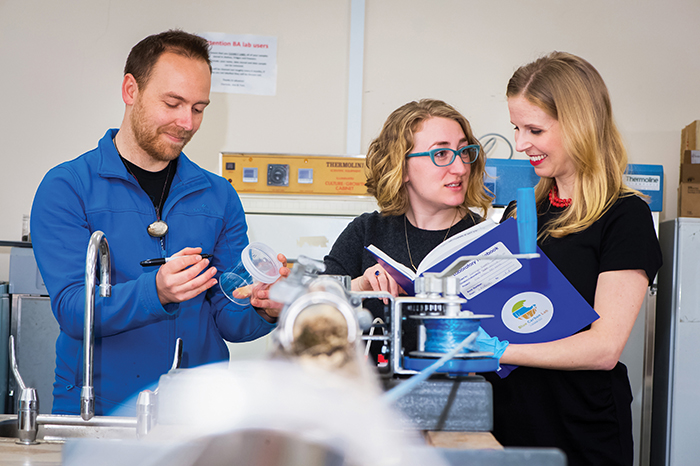
A business investment
Macreadie says that the fisheries sector is in a prime position to capitalise on benefits and opportunities. Blue carbon credits, like any other commodity, can be banked, traded or used to reduce a business’s own carbon footprint.
In 2016, Austral Fisheries in Western Australia became the world’s first fisheries business to go carbon neutral, initially investing in tree plantations to generate the carbon credits that offset its operational emissions. At the time, CEO David Carter said he would have preferred a blue carbon option, but the method for measuring carbon in coastal or estuarine systems was not adequately developed.
“As a business committed to climate leadership, we have been eagerly awaiting an approved blue carbon method,” Carter says. “It will both increase the overall supply of credits to the voluntary carbon market and allow us to invest in offsets to directly benefit the marine systems upon which our business relies. The caveat, of course, is that these credits need to be broadly price-competitive with other sources of offsets available.”
The creation of an Australian Blue Carbon Standard is expected to guide the development of what Carter calls “gold standard carbon credits”, which is a requirement for investment by companies such as Austral. Although the Australian standard could still take up to five years to develop, work on the trial sites is expected to begin this year.
Decarbonising
Fisheries Research and Development Corporation Managing Director Patrick Hone says the development of blue carbon credits will help the seafood sector decarbonise in a way that makes sense and aligns with its values. He points to the commercial sector’s pledge (‘Our Pledge’) led by Seafood Industry Australia that has committed to doing the right thing by the Australian community.
This will mean doing things differently, he says, to address climate change, for example. “If we are going to get to zero nett carbon at any time in the future, we are going to have to come up with mechanisms to do that in Australia,” Hone says. “Until viable alternative fuels are available for use in aquatic industries, such as ammonia or hydrogen, trade-offs will be needed for the emissions created by petroleum fuels. It makes sense for us, in terms of ‘Our Pledge’, to sequester carbon in the ocean and have the health of the ocean improve its carbon sequestration.”
Restoring productivity
Hone says there has been a significant loss of seagrass beds along Australia’s southern coastline. Recovering seagrasses would immediately create a massive carbon bank. “We would get blue carbon, and we would begin to get healthier habitats. If we rebuild kelp forests, it is good for fish populations, and we get our blue carbon.
“If we can reclaim the samphire across the NSW tidal estuaries and wetlands, it will provide amazing carbon sequestration and great breeding grounds for fish, prawns and other creatures. There are so many win–wins in blue carbon. You get environmental services, you get sequestration, doing the right thing to get to nett zero, we start to rebuild our fish populations, we recover from the impacts of existing climate change, such as the loss of kelp forests, which is happening right now. And it isn’t just about the commercial sector; it’s recreational fishers and Indigenous fishers, as well. We can all do the lifting,” Hone says.
To do this at the scale needed to make an impact in terms of effective carbon sequestration will require an economic benefit to drive investment. Blue carbon credits will create the incentive to help attract the billions of dollars needed to make it work.
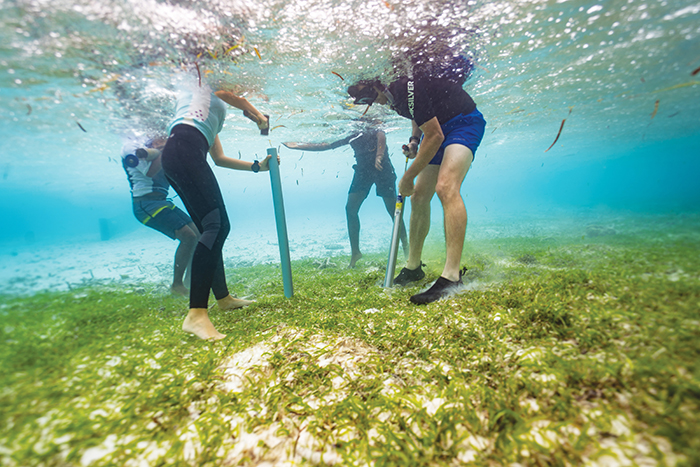
Fast facts
|
State initiatives
Australia is home to more blue carbon than any other country and was one of the first countries to include blue carbon in its Greenhouse Gas Inventory. The global carbon market grew by 20 per cent last year and is expected to continue to soar.
State governments have already dipped their toes into the blue carbon pond. The Victorian Coastal Wetland Restoration Program is a multi-sector approach that brings together academia, government, traditional owners and the sector to undertake wetland restoration on private and public land.
In Queensland, the Government’s $500 million Land Restoration Fund aims to expand on farming carbon in a way that also delivers environmental and economic benefits. The South Australian Government released its Blue Carbon Strategy in 2019, which outlines ways for state-based projects to progress. This may include blue bonds, payment for ecosystem services and public–private partnerships.
SA Environment Minister David Speirs agrees that blue carbon is a win–win–win when it comes to climate action.
“The SA Carbon Strategy aims to develop a range of blue carbon projects along South Australia’s coastline, particularly those near metropolitan Adelaide. We are working with universities, not-for-profits and councils to advance initiatives that have practical benefits. The opportunities are endless with blue carbon. We believe we can get significant income streams through carbon credits that can then be directed back into environmental restoration projects.”
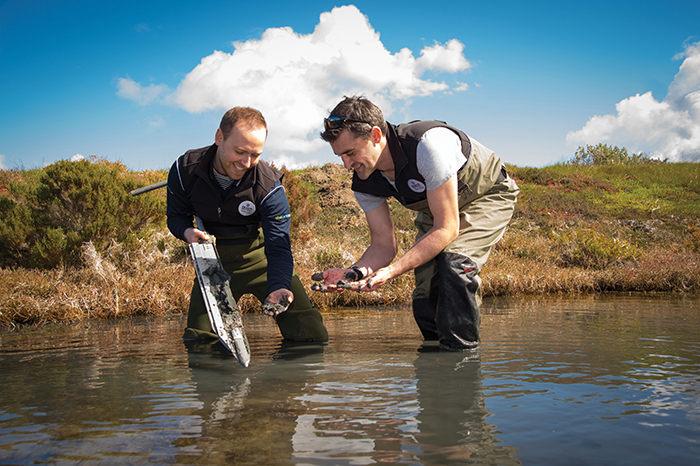
International efforts
Australia is part of an international research effort involved in establishing blue carbon projects and credits. It is a member of the International Partnership for Blue Carbon, which supports knowledge exchange and collaborations between researchers, project managers and policymakers by establishing a blue carbon restoration and accounting community of practice.
The Australian Government operates the Blue Carbon Accelerator Fund, supporting blue carbon restoration and conservation projects in overseas countries. These projects will demonstrate and enable measurement of climate, biodiversity and livelihood benefits, enhancing the business case for private sector investment in coastal blue carbon ecosystems.
The Government also supports the Global Ocean Accounts Partnership to build ocean accounting capability internationally and deliver environmental economic accounting for projects under the Blue Carbon Accelerator Fund.
Macreadie believes that, once established, blue carbon credits will attract a premium. “A colleague of mine talks about them as the Tiffany diamond of the carbon world. You’re investing in a system that will bury the carbon for thousands of years.
“The science clearly supports investment in blue carbon conservation and restoration as a pathway for mitigating climate change. But blue carbon projects are not being implemented on the ground, despite enthusiasm for them in carbon accounting systems,” says Macreadie. Barriers lie in misunderstanding and confusion around governance, social dimensions, finance and law. More specifically: a lack of understanding and acceptability of blue carbon by stakeholders and users; uncertainty in legal rights to blue carbon, particularly with complex land tenures; immaturity in market-based mechanisms to finance blue carbon and a lack of decision support to guide or prioritise on-ground actions.
However, Macreadie remains confident about future developments. He says, “This is an exciting time for blue carbon in Australia. Operationalising blue carbon will not only achieve measurable changes to atmospheric greenhouse gas concentrations, it will also provide multiple co-benefits for the natural environment and society.” f
More information
Deakin Carbon Lab, www.bluecarbonlab.org
Coastal Blue Carbon Ecosystem, www.awe.gov.au/science-research/climate-change/ocean-sustainability/coastal-blue-carbon-ecosystems





